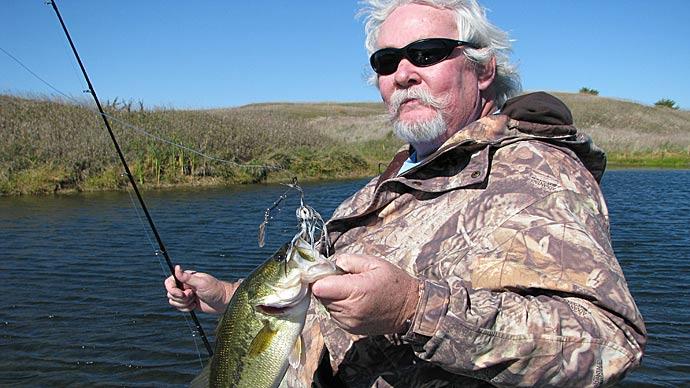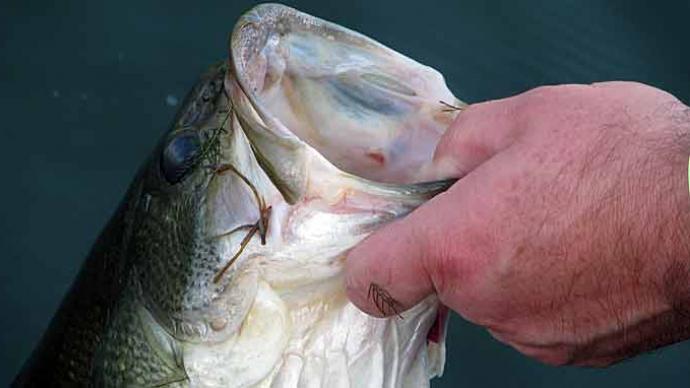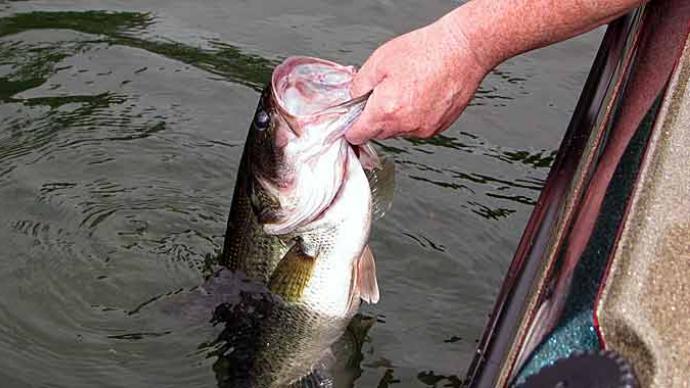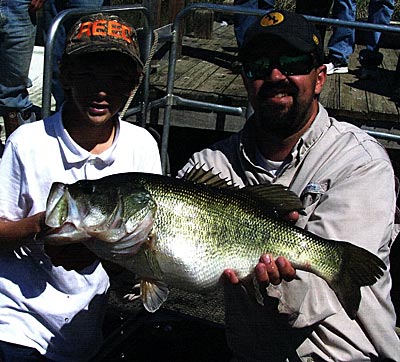
For years, we've preached the importance of harvesting a pond. A good analogy is comparing your pond to a garden. If you plant tomatoes, peppers, and green beans, your intent is to harvest when ripe, right? Your pond runs parallel to that example.
The big difference is determining when your fish are ripe. That's partially based on your goals.
Not many years ago, fisheries scientists, biologists, and pros pretty well agreed that catch and release was a good thing for a freshly stocked new pond until its third or fourth year. Then, those same advisors suggested removing selected sizes of fish. For Largemouth bass, the general suggestion was to remove all bass under thirteen inches, starting after the third year. Essentially, that advice was designed to preserve the originally stocked bass and begin harvesting their babies, usually of size a year after that first bass spawn. For bluegills, harvest recommendations have been to preserve the biggest of the biggest and harvest the next size down. That keeps younger fish from dedicating too much energy to reproducing and keeps them growing faster and larger. With smallmouth bass, most recommendations are based on relative weights. If weights drop, harvest some fish in that size class.
In reality, that recommendation may be suitable for most species offish any pondmeister wants to produce.
But, with today's trends, experience, and knowledge of pond fisheries, those pondmeisters serious about growing big fish have zeroed in on a better-defined set of harvest rules, paying attention to several important details.
Another consensus of the pros today is the genetic propensity for behavior in fish. The most studied fish for aggressive behavior is Largemouth bass. Several studies have proven beyond a doubt that aggressive behavior in that species is an inherited trait. When people begin a harvest plan of culling all bass below or between a certain size class, they typically do it via angling. That means they are harvesting aggressive fish—those bass that tend to bite a hook.
Over time, with aggressive harvest via angling, the results are becoming predictable. Sure, the biggest bass continue to grow. But, along with that positive result, catch rates drop significantly within three years of a harvest program.
Ain't nobody got time for that!
With information available at the tap of a button on a smartphone or computer, serious pondmeisters are paying attention to more detail. That includes their fish. Specifically, which ones to keep and which ones to release.
Here's where it gets complicated. Harvesting fish has been a choice we make to do what we can to try to keep our pond's fishery in balance. Balance means having many different size classes of all different species, and all of them in good shape, or body condition. So truly, harvest really isn't a choice, it's a requirement, or your fishery will decline to something less than fun. Selective harvest is an attempt to manage predator fish and their prey, to keep the predators from demolishing its food chain. Since that's been the main goal in private pond fisheries management, it hasn't been too hard to accomplish, other than angling's societal notion to not harvest fish at all—and the perception that culling small fish turns into work when you feel like you have to do it. That's why most pros have made the simple recommendation to cull fish within a size limit. For example, a common recommendation is to cull all Largemouth bass between 10-14 inches.
Here's where the details, and fine tuning are beginning to come into play.
A recent study shows that less than 2% of all college athletes become professional players in the United States. That's data collected over several pro sports, by the way. Baseball players have the best odds of becoming pros, some of that due to the extensive minor league system out there. That same study shows that less than 0.05% of all high school athletes will make it to pros in any sport.
If you think about it that way with your pond and its fishery, it will change the way you harvest your fish.
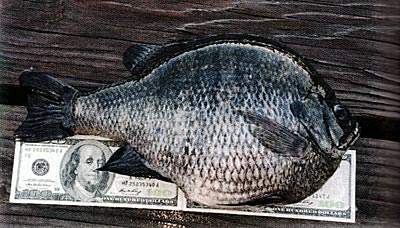
Circle back to your goals. If your primary goals are to seek that elusive balanced fishery, think about your harvest plan in a broader sense. To do that, and do it well, you'll need to understand what good body condition means for those fish in your precious waters.
Study relative weight tables for the important species of fish—those you wish to see thrive and grow the most.
As your fishery matures, prepare to cull those fish which help you accomplish those goals. For that balanced fishery, expect to harvest your target species as their body condition begins to decline. That's a great reason to keep good catch records and track your fish's growth. That's also a good reason to tag some fish, track those individuals, and extrapolate to estimate your total population. Be generally selective about which fish you cull, but be generous with your harvest, until overall body condition rises where you expect it.
Here's where it starts to get a little trickier.
If you truly want the best of the best of your fish, with good catch rates, then you have to be able to judge each fish you catch individually. If you catch a fish that fits within the length category for harvest, do you automatically harvest it? For example, you've set your slot limits in your bass lake to harvest fish between 12-15". You have a good morning and catch 25 bass. Of those, 20 are between 12-15" and the rest were well beyond, on their way to much larger sizes. Do you automatically cull all 20? Or, should you have a second, maybe even a third set of criteria?
Yes, you should have more criteria.
If you are in the race to grow some champion fish, you have to absorb the ability to discern between those fish inside that slot size. Think about the comparison between high school, college, and professional athletes and compare this to your goals for your fish. If your goal is to have a great high school team of fish, then preserve your junior varsity fish and don't worry too much about which fish hit the skillet. But, if you are after something bigger, or a general population of prosperous, fast-growing fish destined for champion-status, you need a different take on harvest.
Here's where I'm going. Those pro-athlete fish have similar characteristics. Most are deep-bodied, thick across the shoulders (their back, above the gills), and hit your bait harder than most of those other average beasts of your waterway. If you can discern how aggressive the bite is from an individual fish, that may be one of your criteria to preserving the aggressive gene in your pond, with less concern about growth rates and size.
Define those criteria, and then learn how to identify them.
Comparing lengths and weights is obviously the easiest thing to do. If a fish doesn't meet that primary criteria, out it goes. But, if you truly want to try to grow the next state record, or your next personal record, and preserve the integrity of your gene pool, you'll want to use other criteria as well. This is where you get to exercise your best judgement and see the results years from now.
Start with lengths and weights. That's first. If you catch a thirteen-inch bass as an example, and it weighs 14 ounces, hit your lure like a freight train, and is deep bodied, should you release it? The second criteria should be relative weight. If your slot fish is 105% of its desired weight, that could be your defining size. I wish I didn't have to use words like could or should or maybe, but that's truly the nature of this qualitative beast of fisheries management. But, for comparison, if most of your fish in that 12-15" slot range are 100%, maybe you should be releasing all their similar brethren that are 110% and cull those at 100% or less.
Lengths and weights are the first criteria. Body condition is the second one. Are there others? Yes. I was in a boat with a pondmeister last spring and he wanted to show me some of his fish. He's been culling bass, with a goal of growing as many double-digit fish as he can. He and I caught about 20 bass in an early morning hour of fishing his 20-acre lake. He caught about fifteen, and I boated five. Of those 20 fish, 17 fit his length-weight criteria to cull.
But one interesting thing happened that morning. One lanky bass, about 15 inches in length, tore into his spinnerbait. We both thought that bass was way bigger than it was. When he brought it aboard his 16-foot jon boat, we were both surprised is was so lean. Its relative weight was around 80%, well within the bounds to toss into the cooler. But, he studied that fish, looked it up and down, and then handed it to me. He said, "Keep it or release it?" I said, "It's your lake, what are you thinking?" He said, "It's a male, way underweight from spawning recently. It won't get any bigger than this. But, it smacked my bait so hard, I want to keep it in the water." His decision was based on how aggressive that bass was at that first strike, and that it has the genetics for aggression that can be passed on. When I grabbed that fish by the lip, I noticed it was tagged. After he released it, he looked on his smartphone where he had a list of tag numbers and fish sizes. What he said next drove his point home. "I tagged that bass two years ago and have caught it again now four times since then." That's a twenty-acre lake, folks.
That bass definitely has the aggressive nature, and this pondmeister wants this little daddy to spread his milt all over the place.
To wrap this up, if you want truly championship fish, you need to figure out your championship criteria, and then be able to discern it on the water. Don't get confused. You surely need to harvest fish, but being even more selectively selective about what you take could be the decision that pushes that upper echelon, that top 20% of your fish, to become all they can be.
Plus, those choices will also determine if you can catch those championship fish when they reach the bigs.
Reprinted with permission from Pond Boss Magazine

